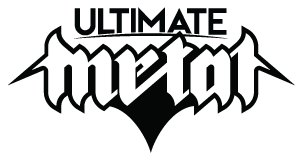this site is great>
http://www.schindler.org/psacot/20010813_ghd.shtml
December 7, 2003
New York Times
Groundhog Almighty
By ALEX KUCZYNSKI
A NEW movie series from the Museum of Modern Art, "The Hidden God: Film and Faith," features some pretty brooding stuff. There's a 1955 Danish movie about a man who thinks he is Jesus Christ, an Ingmar Bergman pastiche about a tormented pastor, a Roberto Rossellini movie about monks. These are, of course, the "intellectual with a capital I" films that audiences might expect at a religious-theme retrospective organized by a major museum. Subtitles and all that fancy stuff.
With one exception. On Thursday, the opening-night feature at the Gramercy Theater, where the series is being presented, was "Groundhog Day," the 1993 movie starring Bill Murray as a sarcastic television weatherman forced by a twist of fate and magic to relive one day of his life, Feb. 2, over and over.
Since its debut a decade ago, the film has become a curious favorite of religious leaders of many faiths, who all see in "Groundhog Day" a reflection of their own spiritual messages. Curators of the series, polling some 35 critics in the literary, religious and film worlds to suggest films with religious interpretations, found that "Groundhog Day" came up so many times that there was actually a squabble over who would write about it in the retrospective's catalog.
Harold Ramis, the director of the film and one of its writers, said last week that since it came out he has heard from Jesuit priests, rabbis and Buddhists, and that the letters keep coming. "At first I would get mail saying, 'Oh, you must be a Christian, because the movie so beautifully expresses Christian belief,' " Mr. Ramis said during a conversation on his mobile phone as he was walking the streets of Los Angeles. "Then rabbis started calling from all over, saying they were preaching the film as their next sermon. And the Buddhists! Well, I knew they loved it, because my mother-in-law has lived in a Buddhist meditation center for 30 years and my wife lived there for 5 years."
...
Angela Zito, a co-director of the Center for Religion and Media at New York University, screens the film for students in her Buddhism class. She said that "Groundhog Day" perfectly illustrates the Buddhist notion of samsara, the continuing cycle of rebirth that Buddhists regard as suffering that humans must try to escape (a belief, Dr. Zito noted, that was missed by executives at Guerlain, who, searching for an exotic name, introduced a perfume called Samsara in the 1980's, overlooking the negative connotations).
"Groundhog Day," Dr. Zito said, is a cinematic version of the teachings in Mahayana Buddhism, known as "the greater vehicle."
"In Mahayana," she said, "nobody ever imagines they are going to escape samsara until everybody else does. That is why you have bodhisattvas, who reach the brink of nirvana, and stop and come back and save the rest of us. Bill Murray is the bodhisattva. He is not going to abandon the world. On the contrary, he is released back into the world to save it."
Some theologians see much less Buddhism in the story than Judaism. Dr. Niles Goldstein, rabbi of the New Shul congregation in Greenwich Village and author of "Lost Souls: Finding Hope in the Heart of Darkness" (Bell Tower, 2002), said he finds Jewish resonance in the fact that Mr. Murray's character is rewarded by being returned to earth to perform more mitzvahs � good deeds � rather than gaining a place in heaven, which is the Christian reward, or achieving nirvana, the Buddhist reward. He has not used the movie as an allegory for his congregation, he said, but he might now.
But wait. Michael Bronski, a film critic for The Forward who teaches a course in Jewish film history at Dartmouth, said he sees strong elements of not only Jewish but also Christian theology. "The groundhog is clearly the resurrected Christ, the ever hopeful renewal of life at springtime, at a time of pagan-Christian holidays," he said, adding: "And when I say that the groundhog is Jesus, I say that with great respect."
The Rev. James Martin, a Jesuit priest and an associate editor of America, the National Catholic Weekly, didn't quite see the groundhog as Christ-like. Referring to the Murray character, he said, "You do, however, very clearly see the deadness of his life at the beginning of the movie." After the self dies, he added, "what is reborn is this new person resurrected from his comatose way of looking at the world."
Copyright 2003 The New York Times Company


